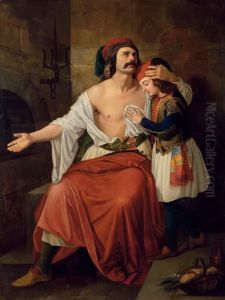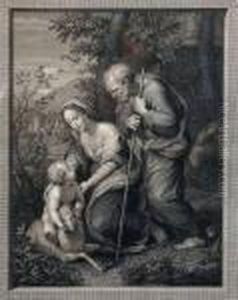Giovita Garavaglia Paintings
Giovita Garavaglia, born in 1790 in Pavia, Italy, was an Italian engraver whose work is recognized for its technical skill and artistic refinement. Garavaglia's contributions to the world of art were primarily during the early 19th century, a period that saw a burgeoning appreciation for engraving as a form of artistic expression. Despite the limited information on his early life and training, it is known that Garavaglia developed a profound expertise in engraving, which allowed him to produce works that were celebrated for their detail, clarity, and expressive quality.
Garavaglia's career took a significant turn when he moved to Milan, a hub for artists and intellectuals at the time. In Milan, he became part of a vibrant artistic community, contributing to the cultural life of the city through his engravings. His works often depicted scenes from history, literature, and religion, reflecting the tastes and interests of the European elite during his lifetime. Garavaglia's engravings were not only appreciated for their aesthetic qualities but also for their ability to make art accessible to a wider audience, at a time when original paintings and sculptures were confined to the wealthy.
Throughout his career, Giovita Garavaglia was known to have collaborated with several prominent artists of his time, reproducing their paintings as engravings. This collaboration between painter and engraver was a common practice, allowing for the wider dissemination of artworks. Garavaglia's reproductions were so finely executed that they often rivaled the original paintings in terms of beauty and were sought after by collectors and art enthusiasts across Europe.
Despite his success, Giovita Garavaglia's life was marked by the challenges typical of artists of his era, including financial instability and the struggle for recognition in a competitive field. He died in 1835, leaving behind a legacy that would influence future generations of engravers. Today, Garavaglia is remembered as a master of his craft, whose work continues to be studied and admired for its precision and elegance. His engravings serve as a testament to the skill and dedication of 19th-century Italian engravers and remain valuable pieces in the collections of art museums and aficionados worldwide.


